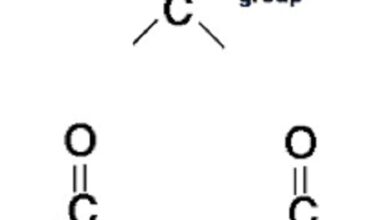Difference between mint and peppermint Similarities and FAQs
Mint and Peppermint
Int this article we will provide you the Difference between mint and peppermint Similarities and FAQs.
What does mint mean?
Mint is an aromatic and medicinal herb from the Lamiaceae family. Its scientific name is Mentha, which contains approximately 25 different natural resources by man. In fact, in these areas, not only species. This plant can be found in large areas from Europe to Central Asia, being widely used as a condiment or to prepare infusions. Since ancient times, its therapeutic properties have been considered for digestive, anti-inflammatory and even aphrodisiac purposes. In addition, peppermint oil has industrial and cosmetic uses due to its characteristic fresh and pleasant fragrance. Therefore, this herb is an important natural resource for human health as well as for modern industry.
What does peppermint mean?
Peppermint is an aromatic herb used to flavor various foods and drinks, as well as in traditional medicine. This plant is native to Europe, Asia and Africa, but is now cultivated in many countries around the world. At least one hundred varieties of peppermint are known: their shape varies from compact to branched; Its leaves can be green or mottled; The aroma also varies between different varieties, generally being minty or aniseed. Its name comes from the Latin Mentha spicata , meaning “fragrant herb.” Peppermint was used for centuries as a natural remedy against digestive problems and inflammation, as well as other ailments. Currently it is still important in homes because it gives the kitchen a refreshing and aromatic touch.
Similarities between mint and peppermint
Mint and spearmint are two very similar aromatic herbs. Both have a pleasant, refreshing, minty aroma, as well as a characteristic spicy flavor. Both are often used in cooking to flavor foods; For example, mint is frequently used to make mint ice cream and lemon mint desserts. They are also commonly used in relaxing or refreshing infusions made with green or black tea. Additionally, both herbs contain many beneficial antioxidants that help improve the overall health of the body. Last but not least, both plants are easy to grow and maintain in the home garden.
Differences between mint and peppermint
Peppermint refers to a family of aromatic plants, while peppermint is the common name for Mentha spicata. Mint is classified in the Lamiaceae family and contains about 15 genera with about 600 different natural resources by man. In fact, in these areas, not only species. This includes peppermint, as well as pennyroyal, oregano, and other lesser-known types such as basilicum or horehound. Peppermint can be easily recognized by its characteristic aroma and its square dotted leaves, similar to oregano leaves but much more fragrant. They are used to season hot and cold salads or soups; They are also used to make infusions and even traditional digestive liqueurs common throughout Europe.
Frequent questions about mint and peppermint
What is mint and what is it for?
Mint is an aromatic herb commonly used in cooking and medicinal products. It has anti-inflammatory, antibacterial, and antioxidant properties that can help reduce the symptoms of some medical conditions. It can be taken both internally and externally to treat pain, nausea or an upset stomach, soothe coughs and other respiratory problems, stimulate appetite and improve digestion. It has also been shown to be effective in treating fungal skin infections, preventing tooth decay or other oral problems. Peppermint has also been used as a home remedy to relieve an upset stomach and reduce flatulence.
Who should not take mint?
People with acid reflux or heartburn problems should not take peppermint, as it can irritate the lining of the stomach and worsen symptoms.
What is the difference between peppermint and mint?
Peppermint and mint are two herbaceous plants, but they have different smells and flavors. Peppermint has a more intense lemon aroma, while mint is much milder. The flavor of peppermint is bitter with citrus notes, while the flavor of mint has a slight spicy touch. In addition, peppermint leaves are somewhat smaller than mint leaves and have a dark gray-green tone compared to the bright green of mint.
What effects does mint have on men?
Mint has several effects on men. It stimulates blood circulation, relieving tired feet and increasing the flow of oxygen and nutrients throughout the body. It also helps with digestion, can reduce anxiety, and relax tense muscles. It can improve memory and also boost overall mood. Plus, it’s refreshing for your mouth when you eat mints or drink herbal infusions like mint tea or coffee.
What are the benefits of peppermint?
The main benefits of peppermint are the following: 1. It is a good source of vitamins, minerals and antioxidants. 2. Helps improve the digestive system and reduce stomach problems. 3. It has anti-inflammatory properties that help reduce pain and inflammation in the joints and muscles. 4. Improves cardiovascular health by keeping bad cholesterol (LDL) levels low. 5. Boosts the immune system to prevent common diseases and infections by fighting harmful bacteria and harmful viruses. 6. It has calming properties that help you relax mentally and physically, thus reducing the symptoms of chronic stress and mild insomnia.
What contraindications does peppermint have?
Peppermint has some important contraindications. First, it should be avoided during pregnancy and breastfeeding. It may cause a reaction in people with allergies to citrus or mint. Peppermint may also interact with medications prescribed to treat respiratory problems, asthma, or high blood pressure. Therefore, it is advisable to consult a doctor before taking it if you are taking any of these medications. Finally, people who suffer from epilepsy should avoid excessive use as it can cause seizures.
What remedies does peppermint have?
Peppermint has many home remedies. Some of the most common applications are to mix it with oil to make a calming and decongestant lotion, add it to tea or infusion to treat mild indigestion, use its leaves to flavor the bath or prepare an exfoliating facial mask. You can also find natural products that contain peppermint extract in their composition.
How do you drink peppermint tea?
Peppermint tea is prepared by boiling 1 teaspoon of dried peppermint leaves per cup of water for about 5 minutes, then removing from the heat and straining to serve. It can be sweetened with honey or sugar to taste.




